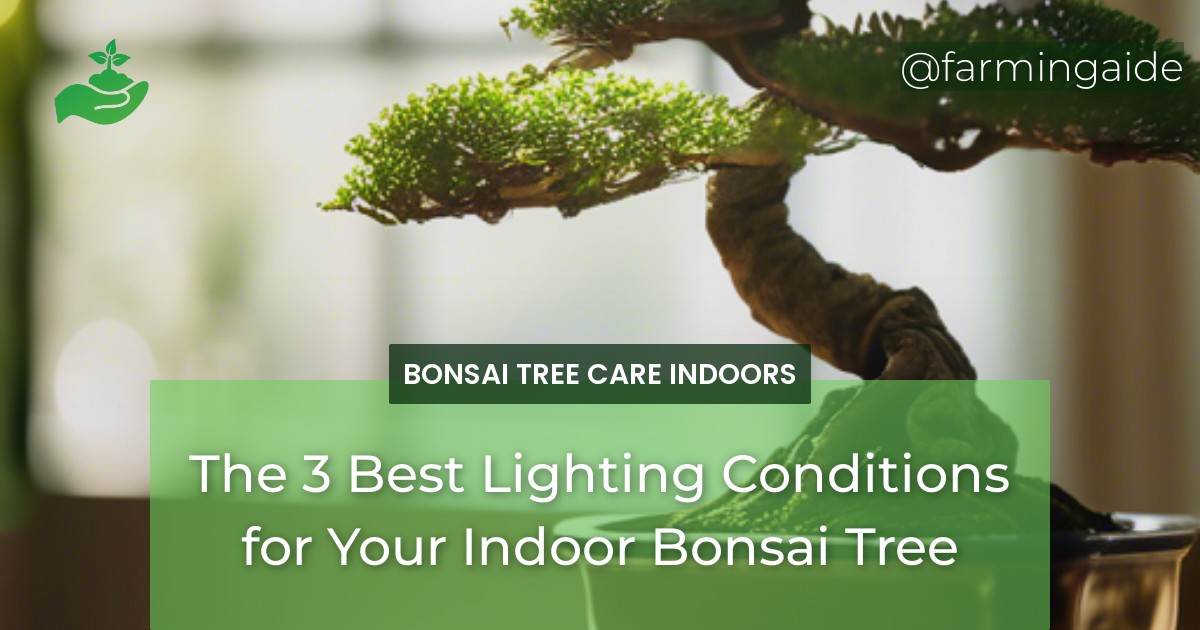When it comes to growing a thriving indoor bonsai tree, one of the most crucial factors to consider is lighting. Providing your bonsai tree with the right amount and type of light can make all the difference between a healthy, flourishing tree and a struggling, weak one. In this article, we’ll delve into the world of bonsai lighting, exploring the importance of light for bonsai health, the best lighting conditions for indoor bonsai trees, and how to implement optimal lighting practices.
Key Takeaways
- Understanding the lighting needs of your bonsai tree is crucial for its health and development.
- Bright indirect light, direct morning sunlight, and artificial grow lights are the three best lighting conditions for indoor bonsai trees.
- Proper placement, timing, and duration of lighting are essential for optimal bonsai growth.
- Avoid over-exposure to direct sunlight and insufficient light to prevent sunburn and weak growth.
- Implementing the best lighting practices can lead to a thriving and beautiful indoor bonsai tree.
Understanding Bonsai Tree Lighting Needs
Bonsai trees, like any other living plant, require light to undergo photosynthesis and grow. However, bonsai trees have specific lighting needs that differ from other plants. Since indoor bonsai trees are grown in controlled environments, it’s essential to understand their lighting requirements to provide optimal conditions for growth and development.
Importance of Light for Bonsai Health
Light is essential for bonsai trees to undergo photosynthesis, a process that produces energy and nutrients for growth. Without sufficient light, bonsai trees may become weak, leggy, and more susceptible to diseases. Adequate light exposure also helps regulate the tree’s internal clock, influencing growth patterns and development.
Types of Light: Natural vs. Artificial
There are two primary types of light: natural and artificial. Natural light comes from the sun, while artificial light is produced by lamps, LED grow lights, or other devices. Both types of light have their benefits and drawbacks, and understanding their differences is crucial for providing optimal lighting conditions for your indoor bonsai tree.
Optimal Lighting Conditions for Indoor Bonsai
Now that we’ve discussed the importance of light for bonsai health and the types of light available, let’s explore the three best lighting conditions for indoor bonsai trees:
ALSO READ
Bright Indirect Light
Bright indirect light is an ideal condition for indoor bonsai trees. This type of light is soft and gentle, reducing the risk of sunburn and promoting healthy growth. East- or west-facing windows are perfect for providing bright indirect light. To create an optimal environment, place your bonsai tree 2-3 feet away from the window, ensuring it receives filtered sunlight.
Direct Morning Sunlight
Direct morning sunlight is another excellent option for indoor bonsai trees. This type of light is intense but gentle, providing the necessary energy for growth. South-facing windows receive direct morning sunlight, making them an ideal spot for bonsai trees. However, be cautious of over-exposure, and limit direct sunlight to 1-2 hours in the morning.
ALSO READ
Artificial Grow Lights
Artificial grow lights are a great alternative to natural light, providing a controlled and consistent light source. LED grow lights, in particular, are energy-efficient and emit minimal heat, making them an excellent choice for indoor bonsai trees. When using grow lights, ensure they’re placed 6-12 inches above the tree, and adjust the duration and intensity according to the manufacturer’s instructions.
Implementing the Best Lighting Practices
To ensure your indoor bonsai tree thrives, it’s essential to implement the best lighting practices:
Placement Strategies for Indirect Light
When placing your bonsai tree near a window, consider the following strategies:
| Window Direction | Distance from Window | Light Intensity |
|---|---|---|
| East/West | 2-3 feet | Moderate |
| South | 1-2 feet | High |
| North | 1-2 feet | Low |
Timing and Duration for Morning Sunlight
When providing direct morning sunlight, ensure your bonsai tree receives:
- 1-2 hours of direct sunlight in the morning
- A gradual increase in sunlight exposure to prevent shock
Setting Up and Maintaining Grow Lights
When using artificial grow lights, follow these guidelines:
- Place the grow lights 6-12 inches above the bonsai tree
- Adjust the duration and intensity according to the manufacturer’s instructions
- Maintain a consistent light schedule to regulate the tree’s internal clock
Common Mistakes and Solutions in Bonsai Lighting
Even with the best intentions, bonsai enthusiasts may make mistakes when it comes to lighting. Here are common mistakes and their solutions:
Over-Exposure and Sunburn
Over-exposure to direct sunlight can cause sunburn, leading to weak growth and discoloration. To prevent sunburn, limit direct sunlight to 1-2 hours in the morning and provide filtered sunlight or indirect light for the remainder of the day.
Insufficient Light and Its Effects
Insufficient light can lead to weak, leggy growth and reduced photosynthesis. To combat this, ensure your bonsai tree receives adequate light from natural or artificial sources. Adjust the lighting conditions according to the tree’s response, and monitor its growth and development.
Conclusion and Final Tips for Bonsai Lighting
In conclusion, providing optimal lighting conditions is crucial for the health and development of your indoor bonsai tree. By understanding the importance of light, types of light, and implementing the best lighting practices, you can create an ideal environment for your bonsai tree to thrive. Remember to monitor your tree’s response to lighting conditions and adjust accordingly. With patience and dedication, you can grow a stunning and healthy indoor bonsai tree.


